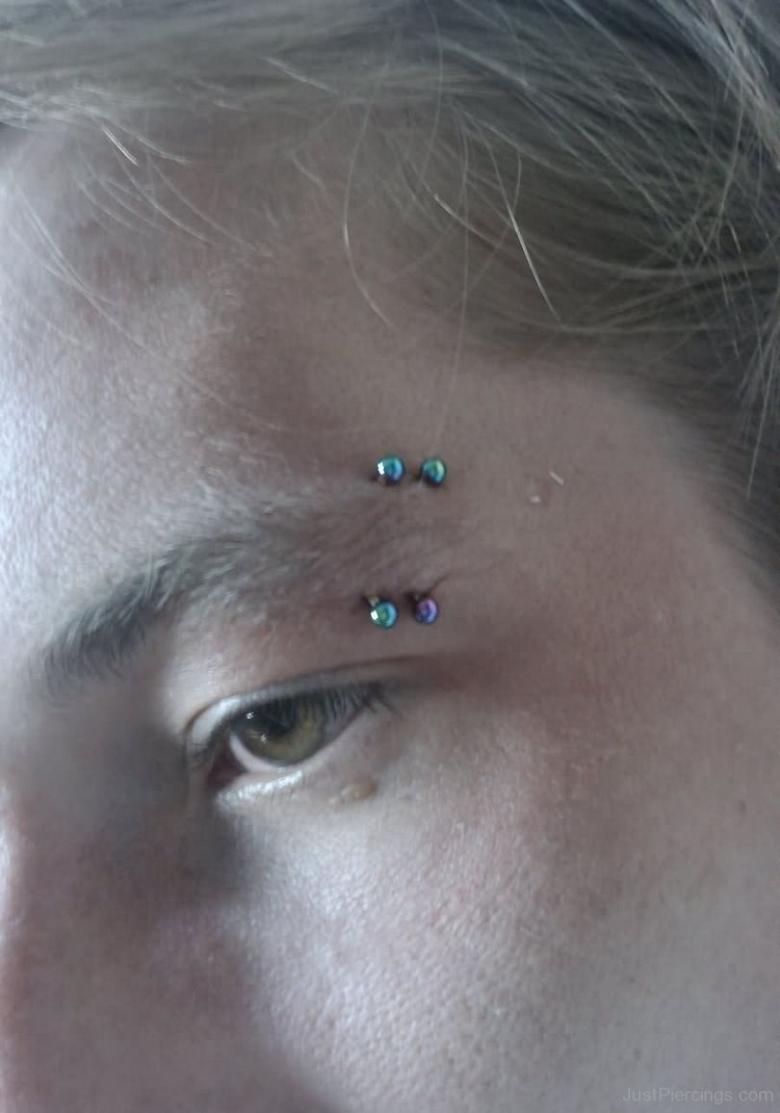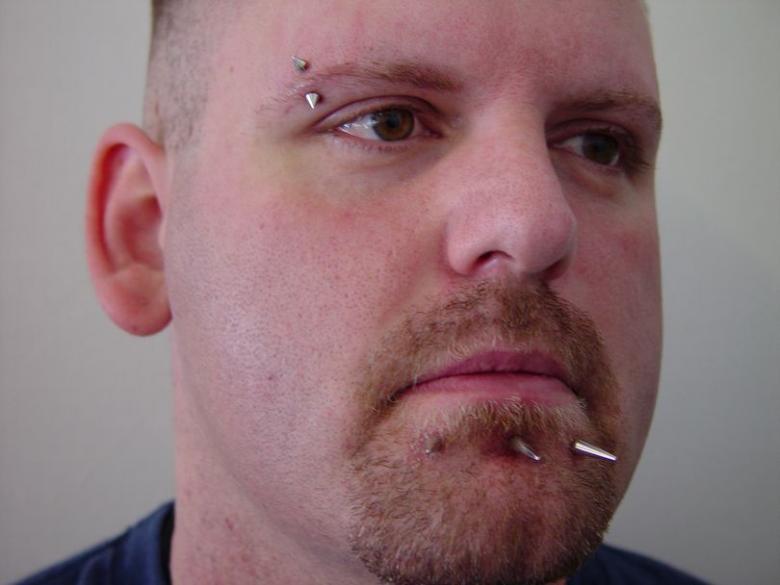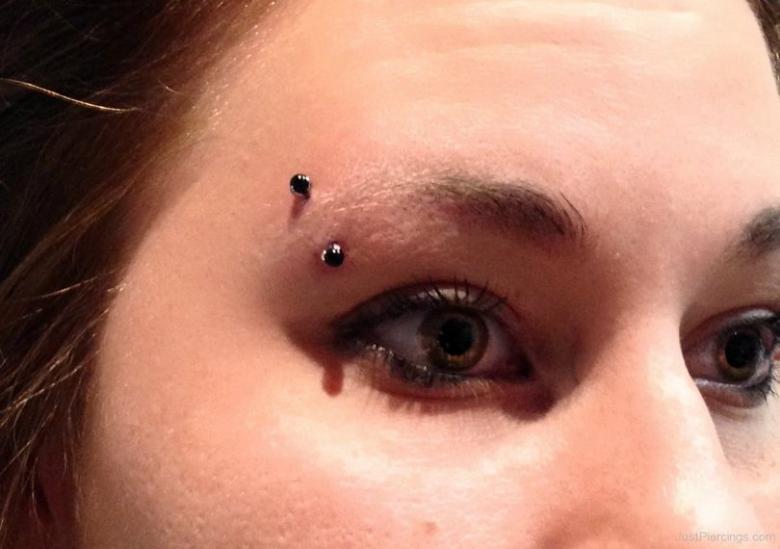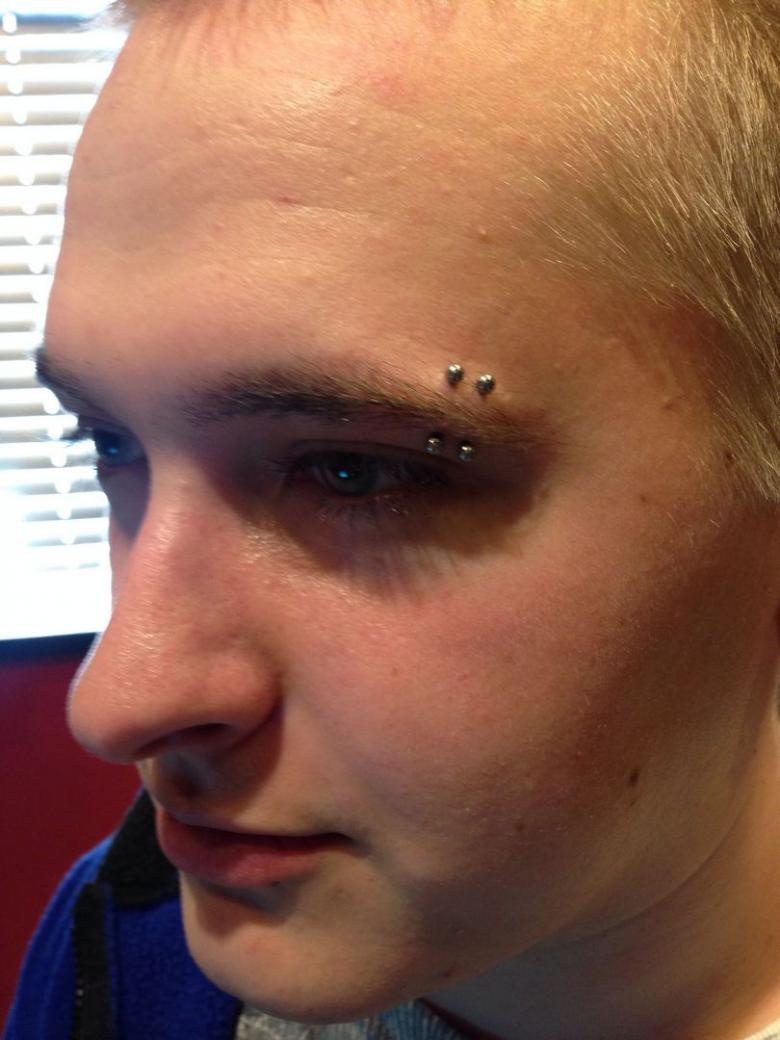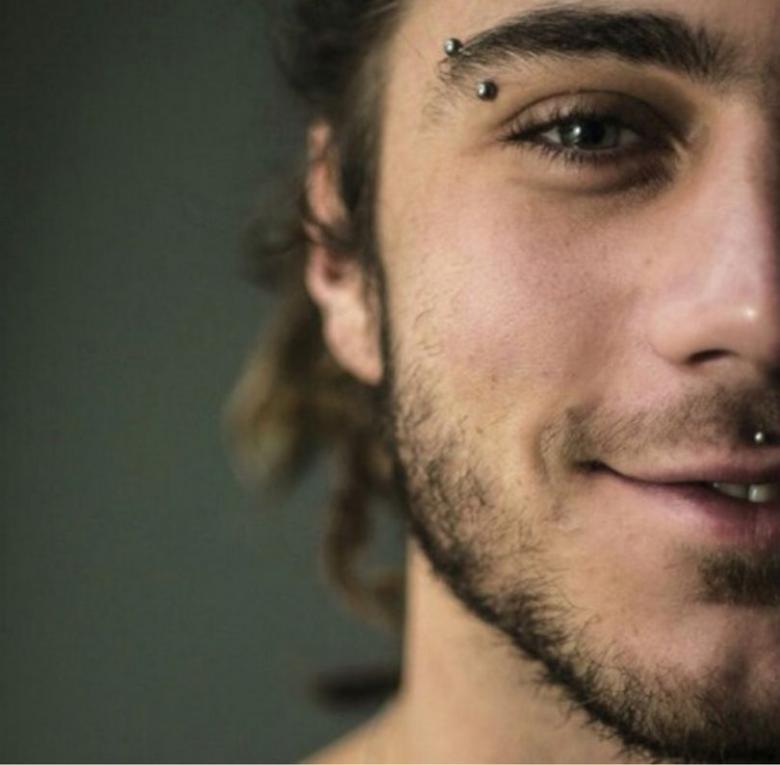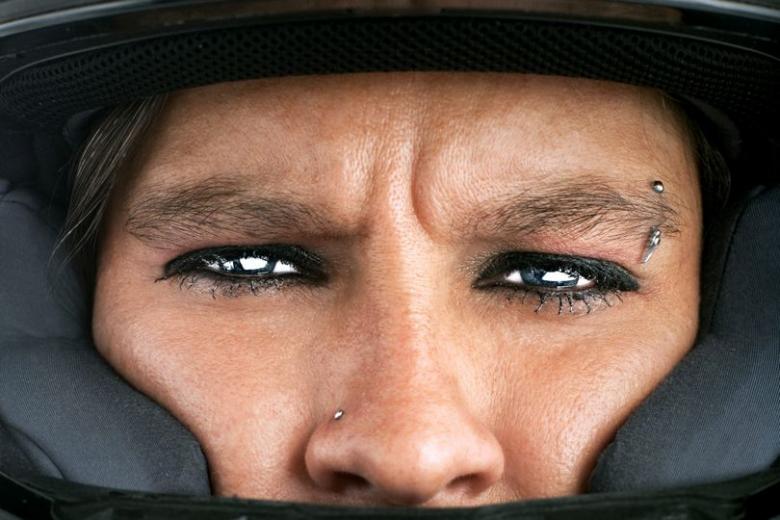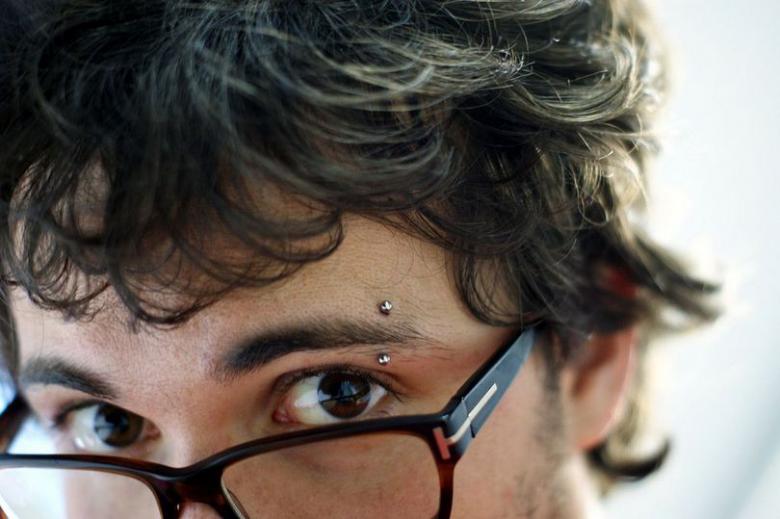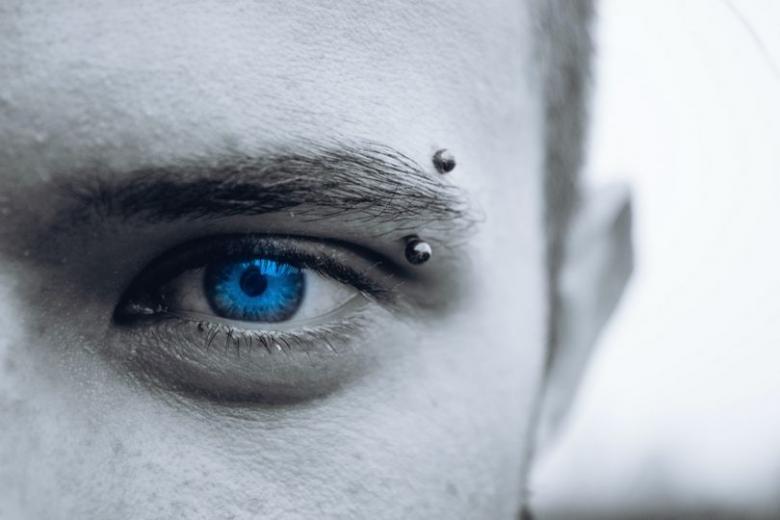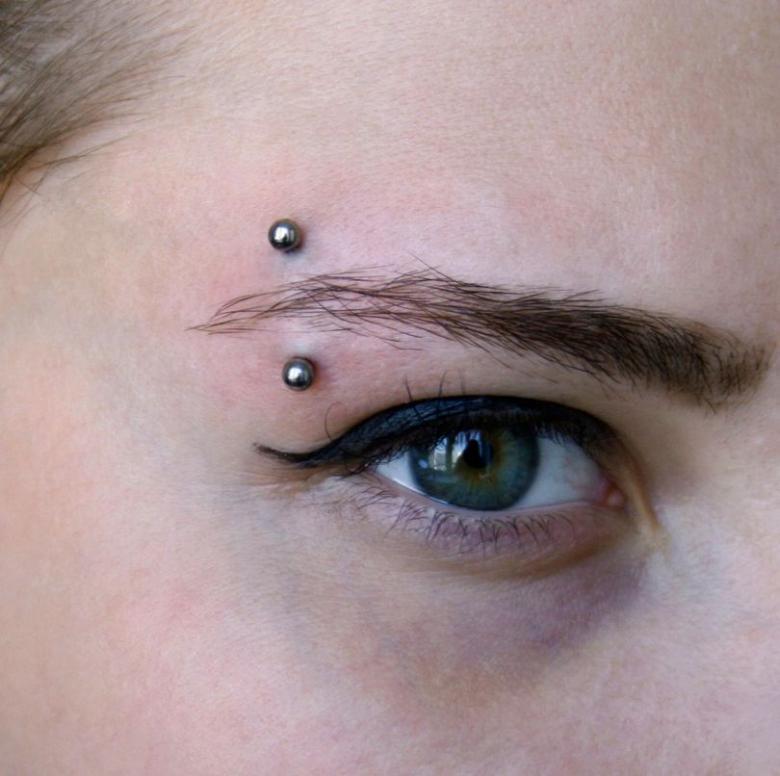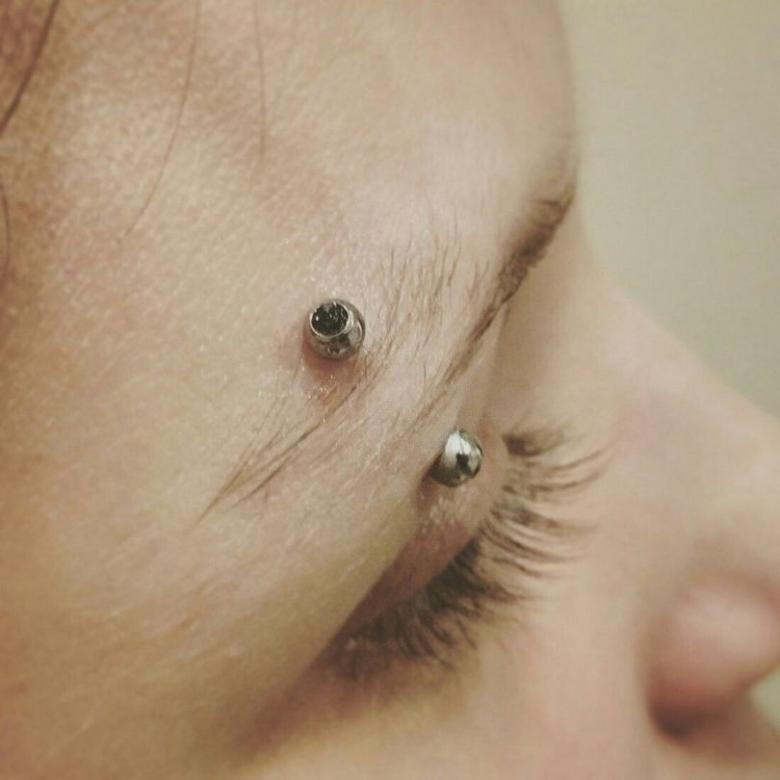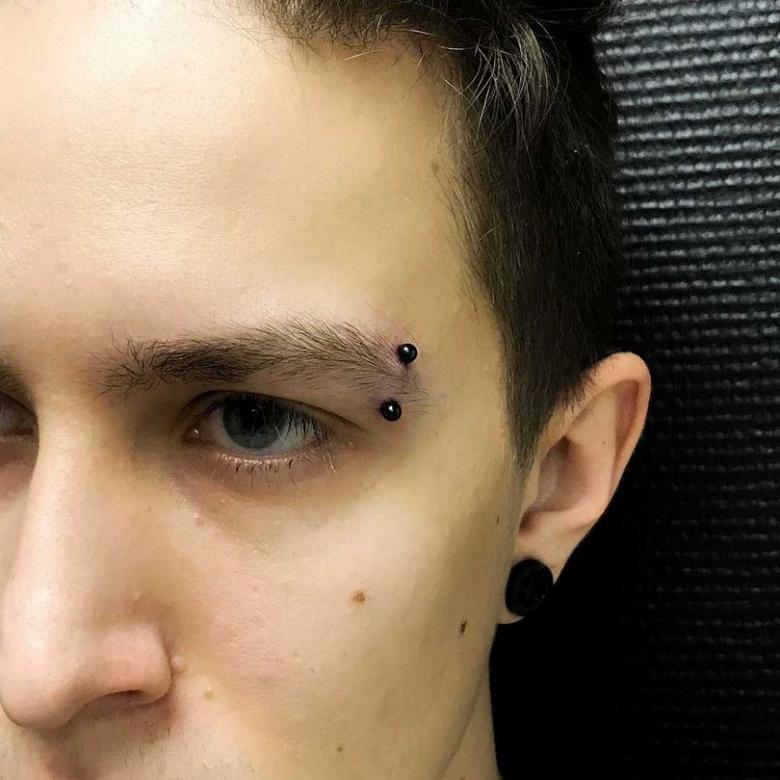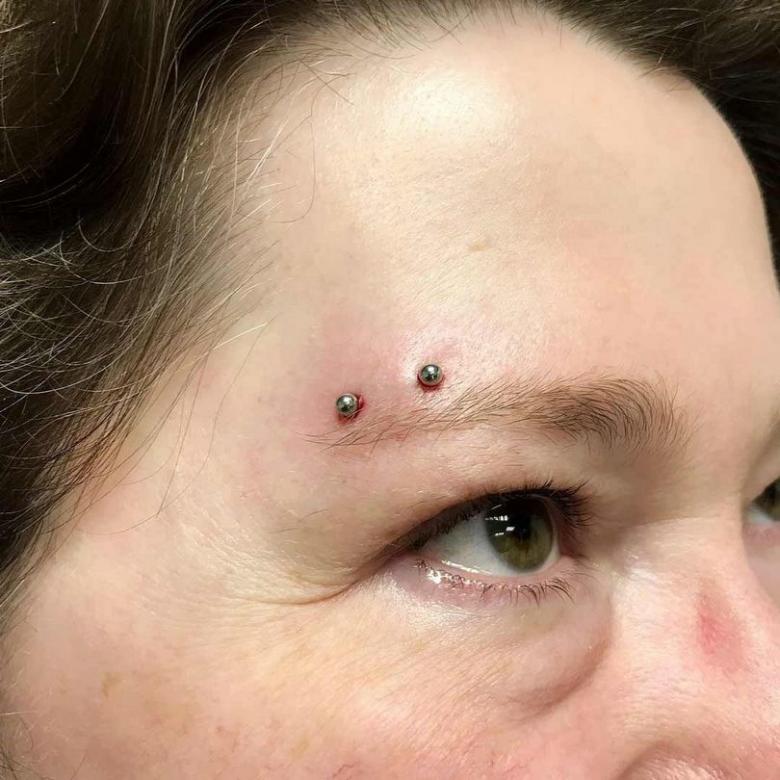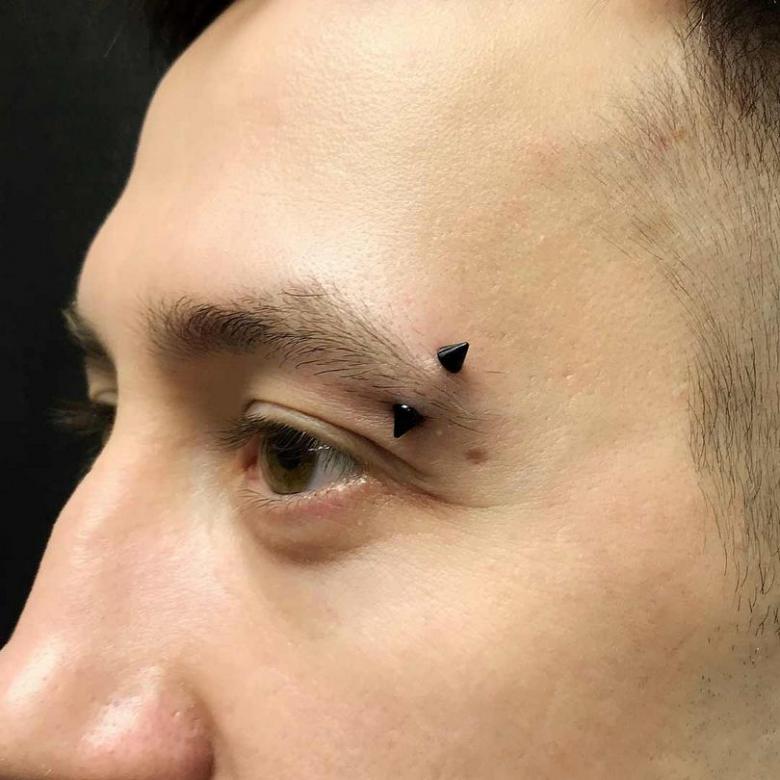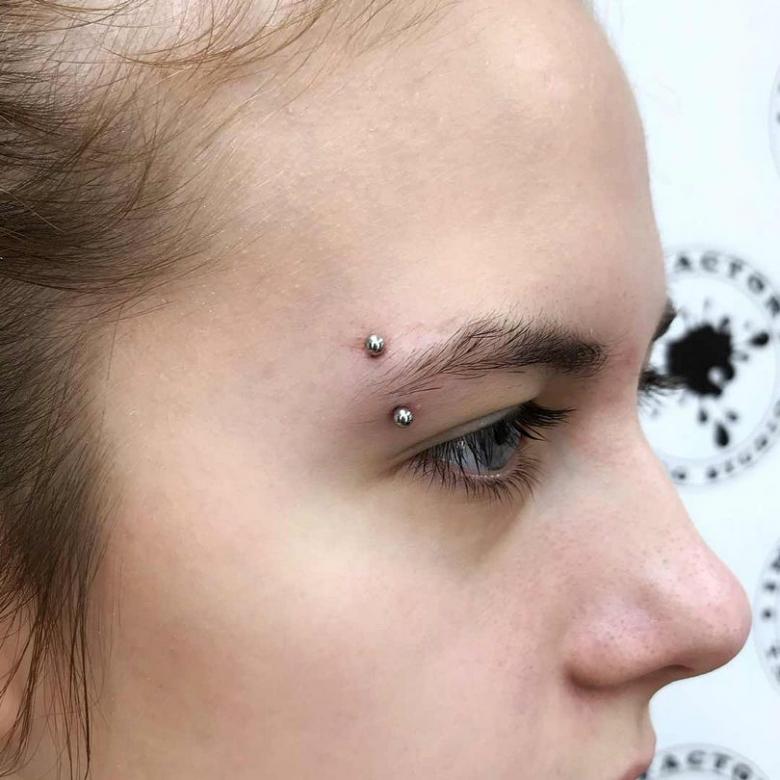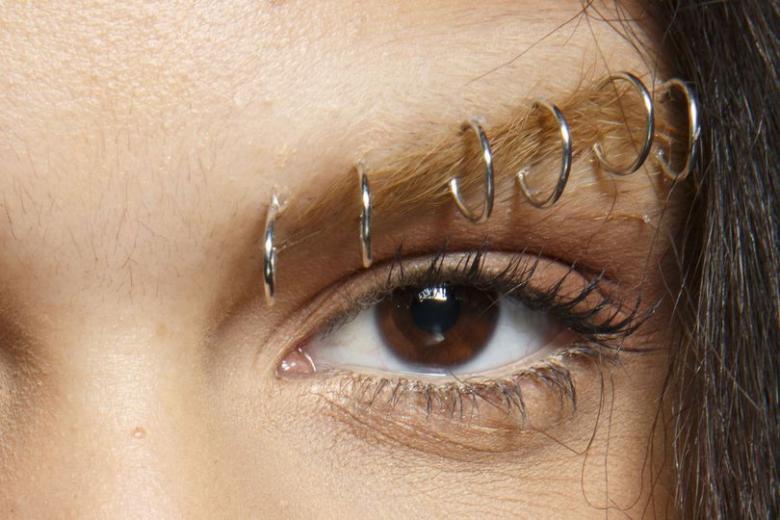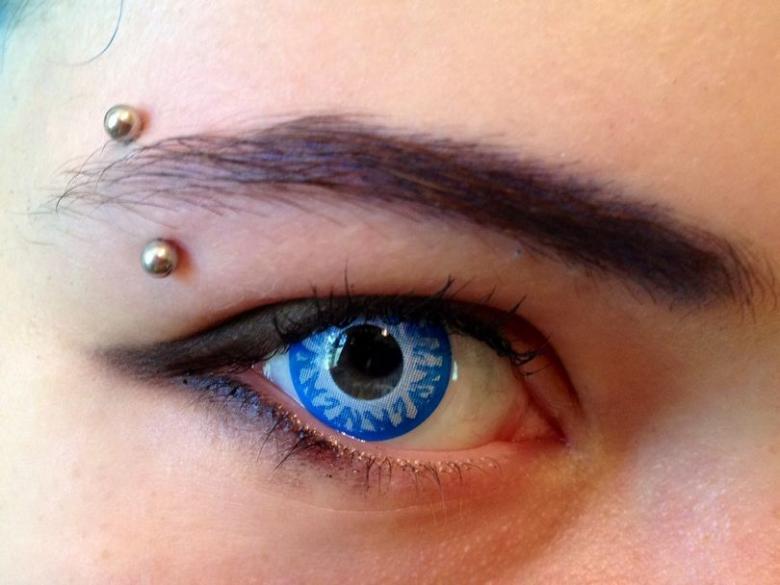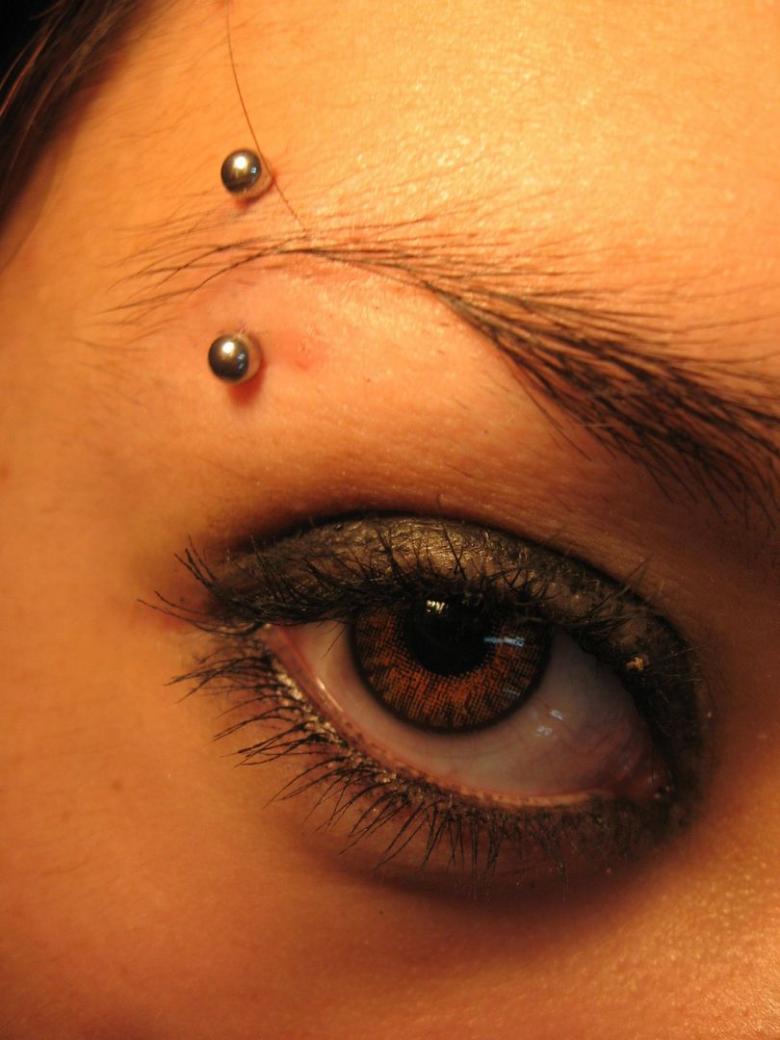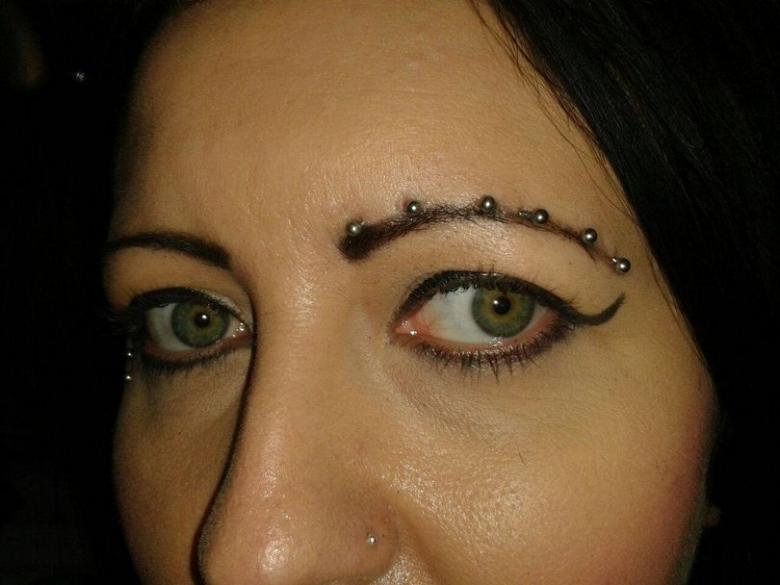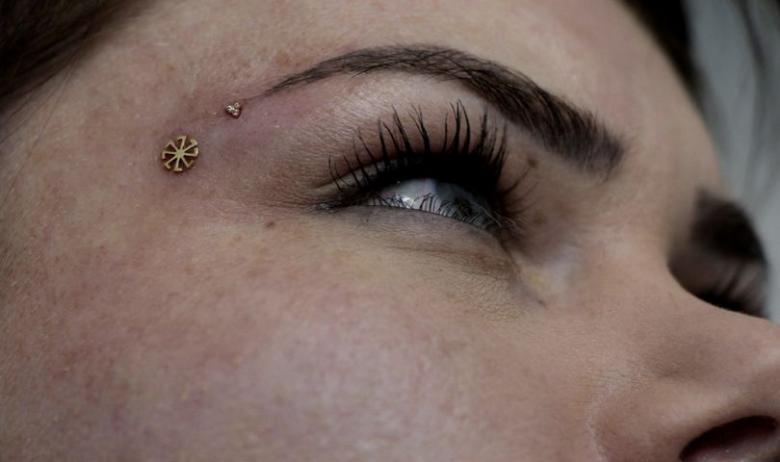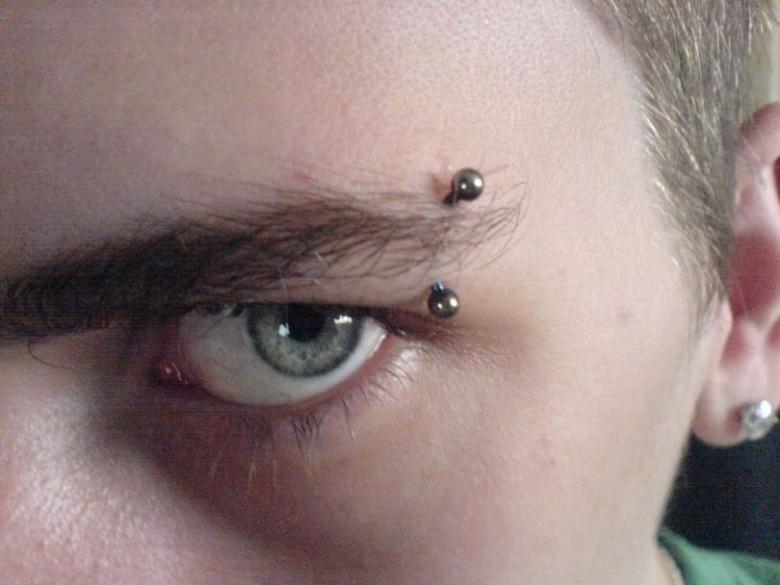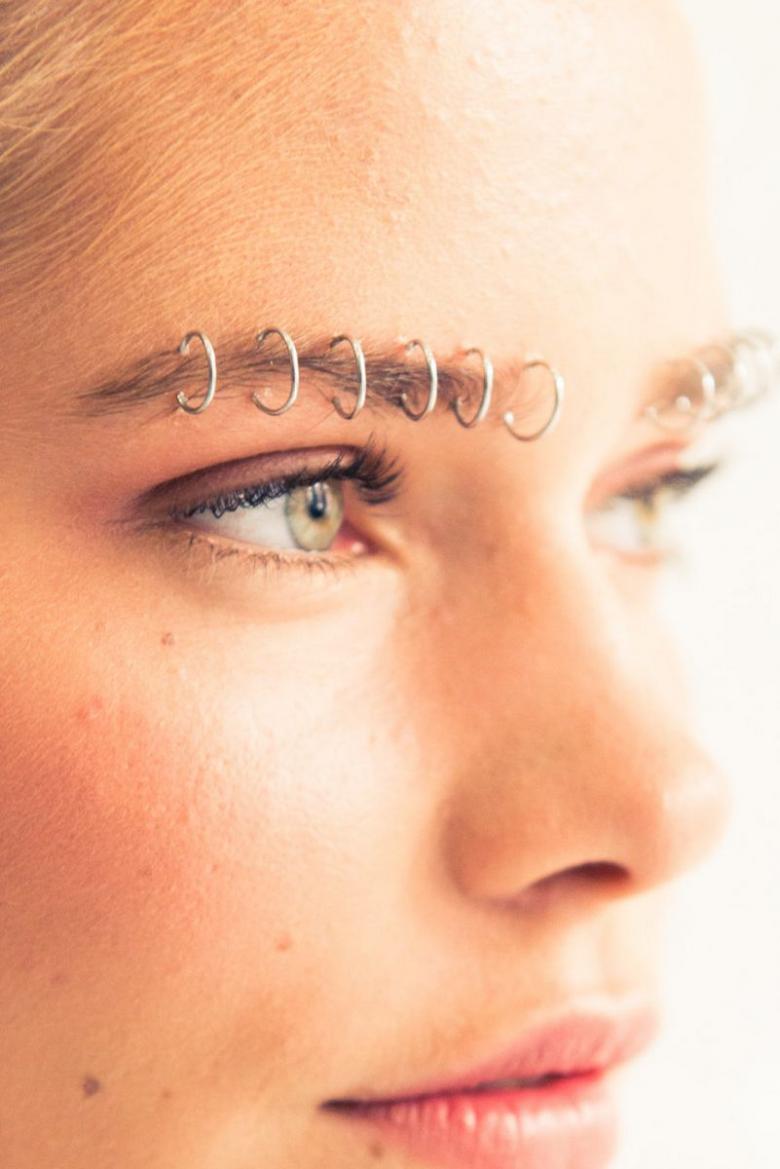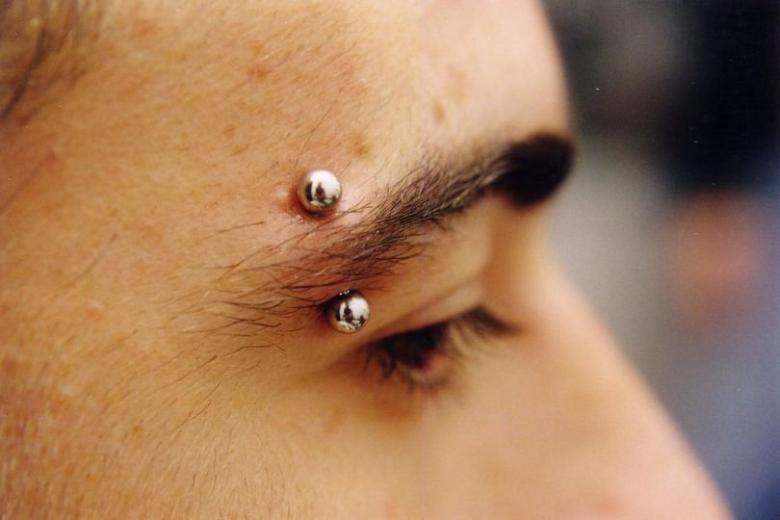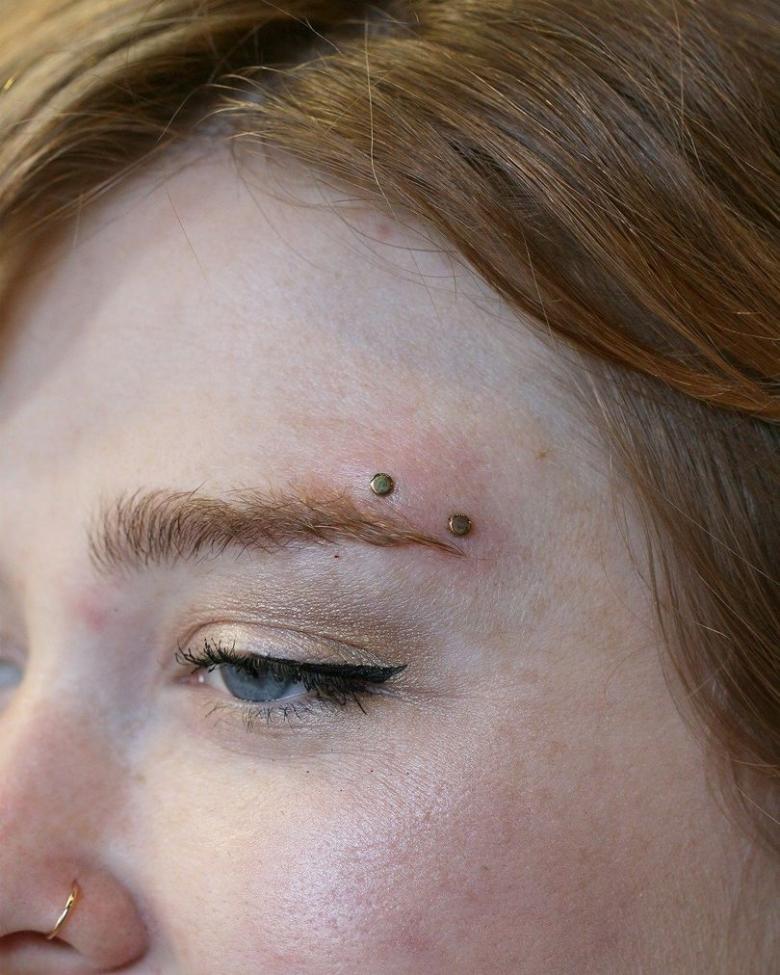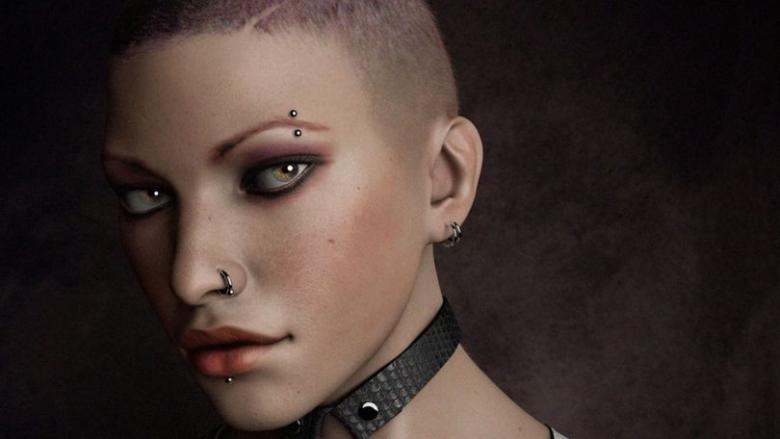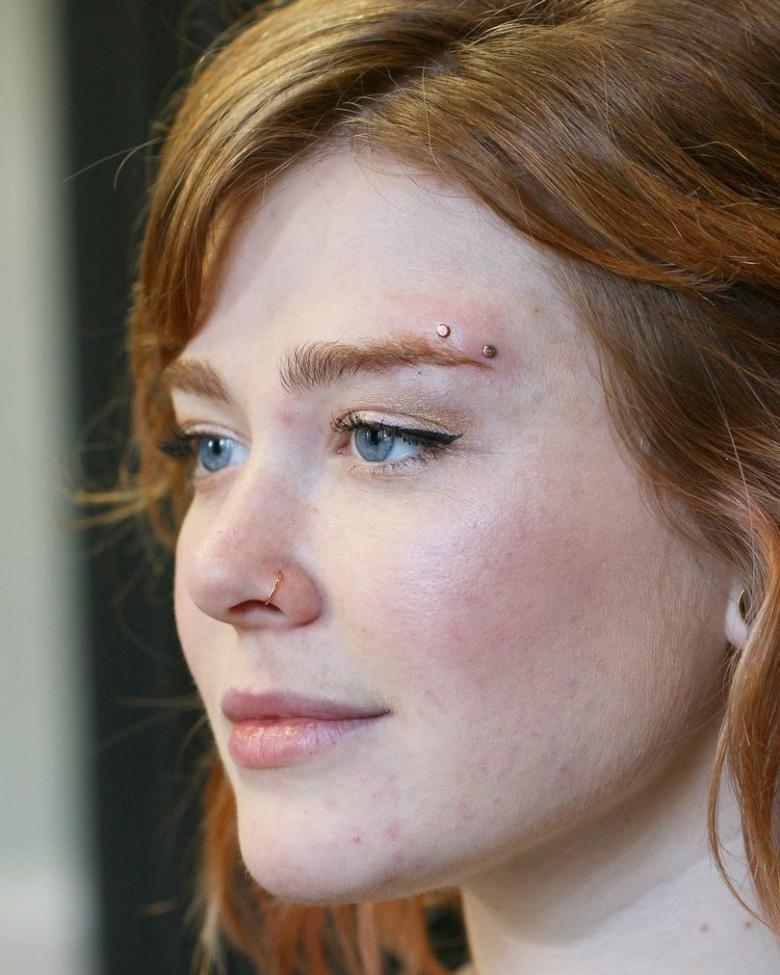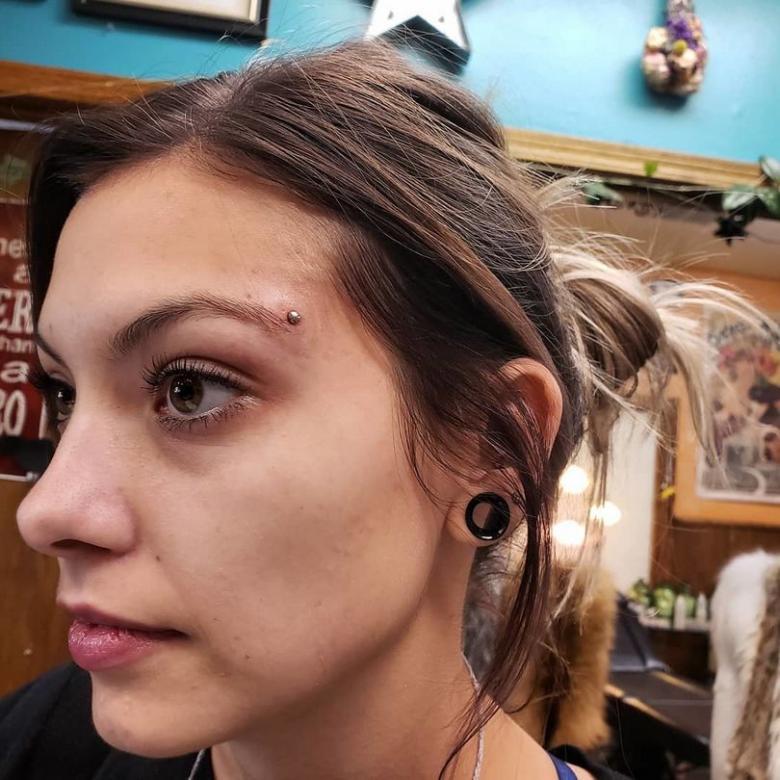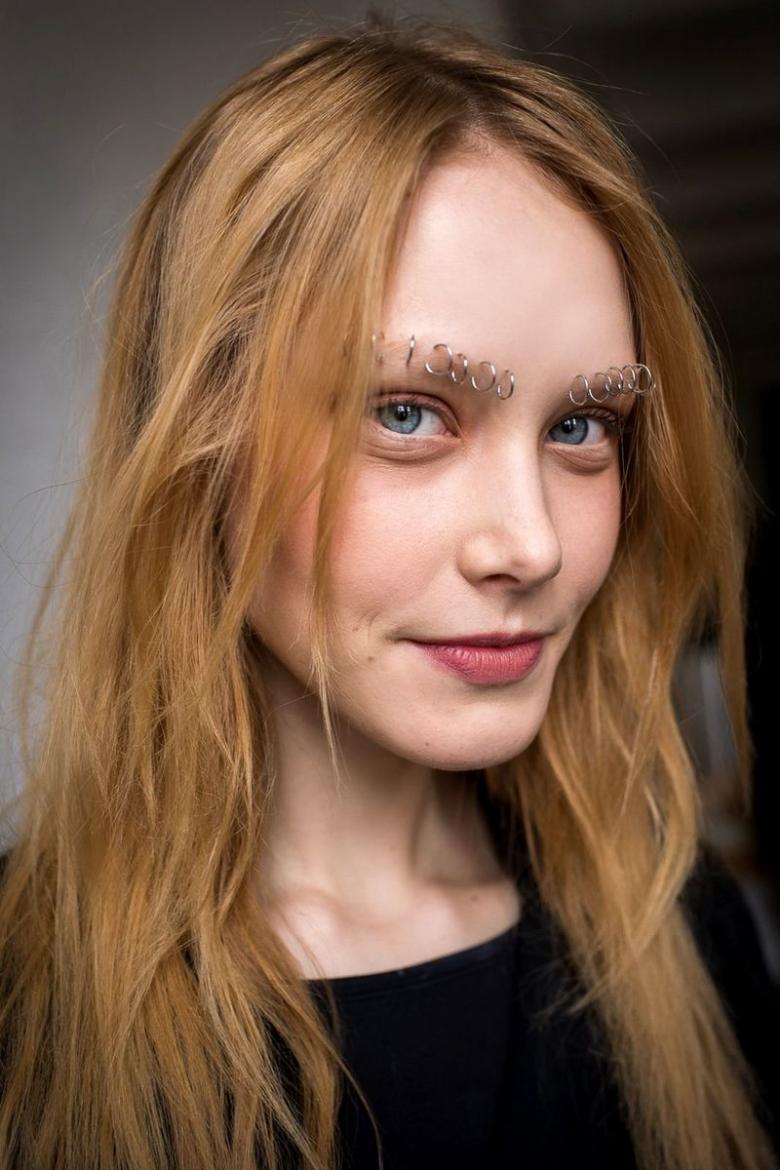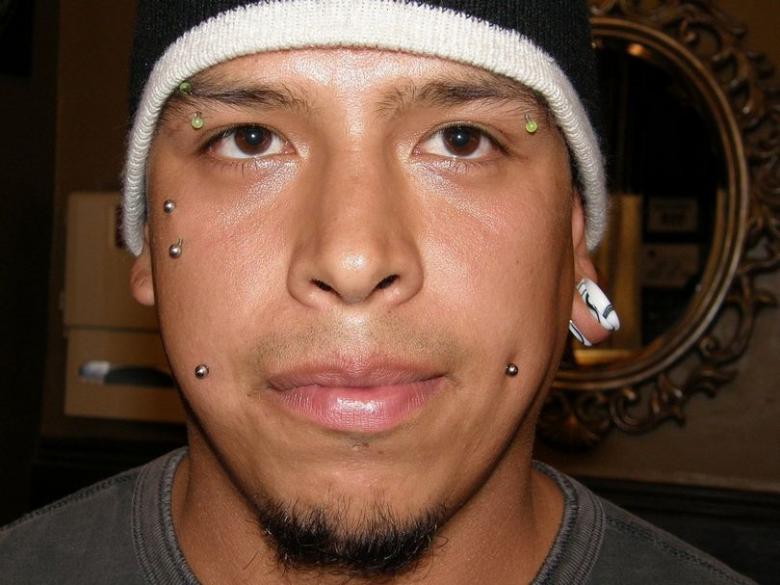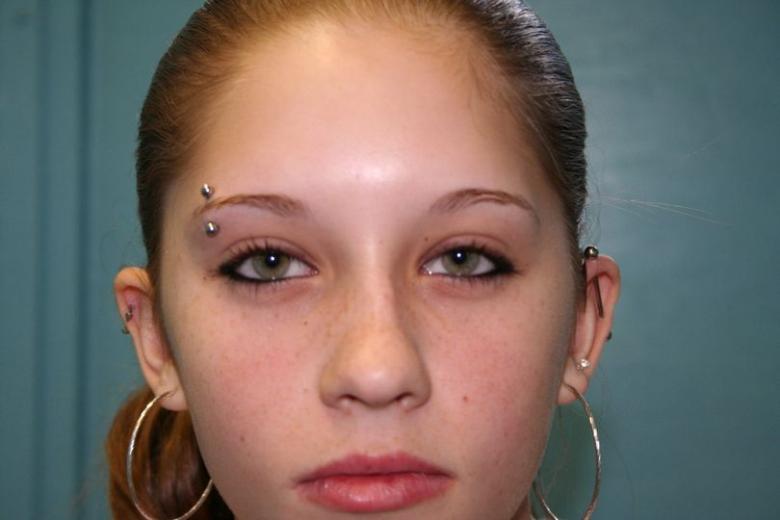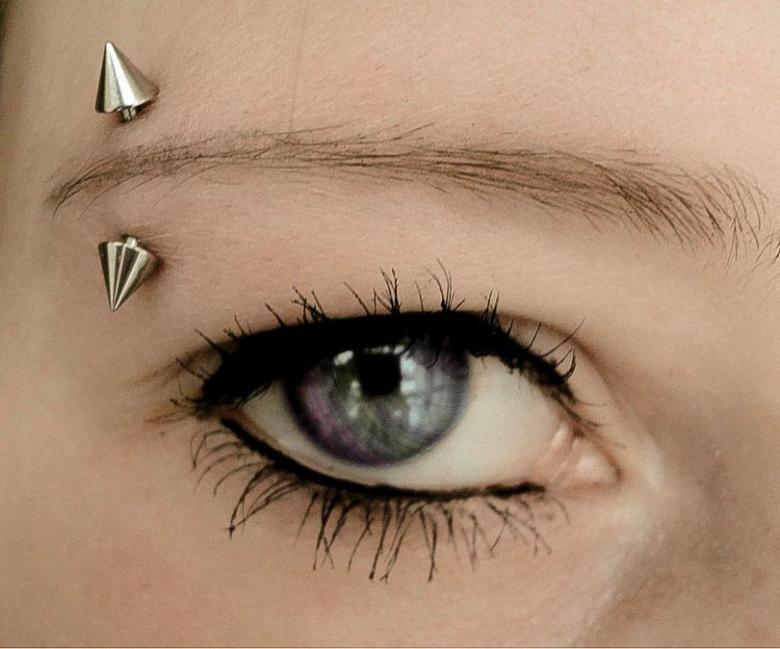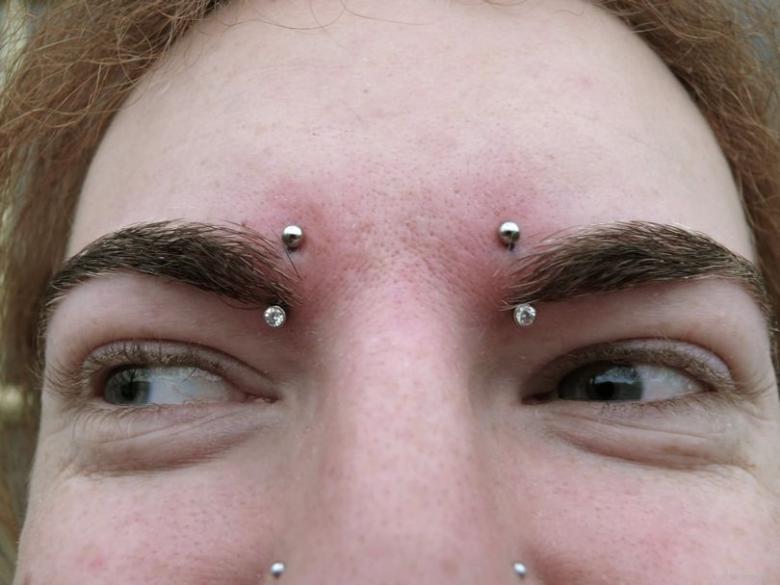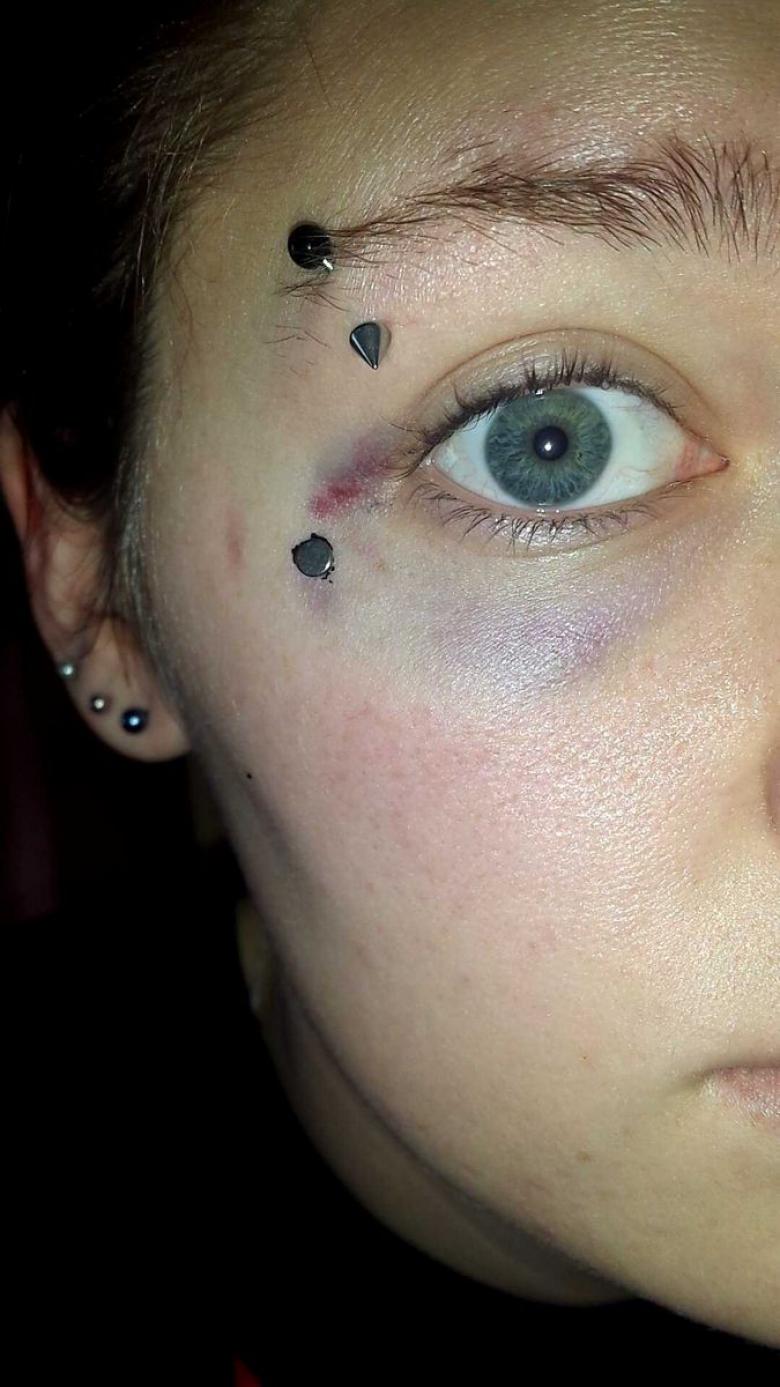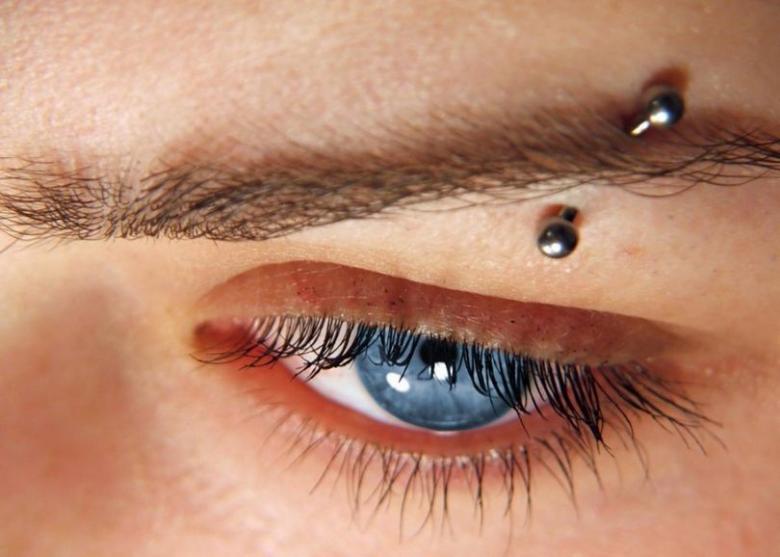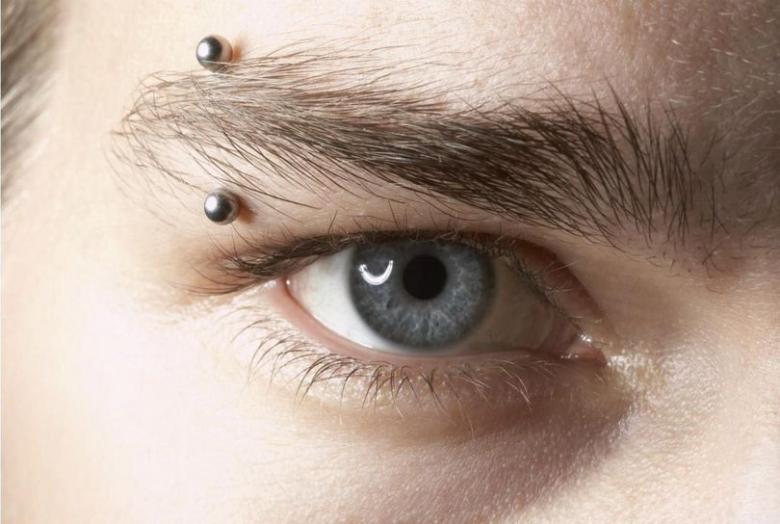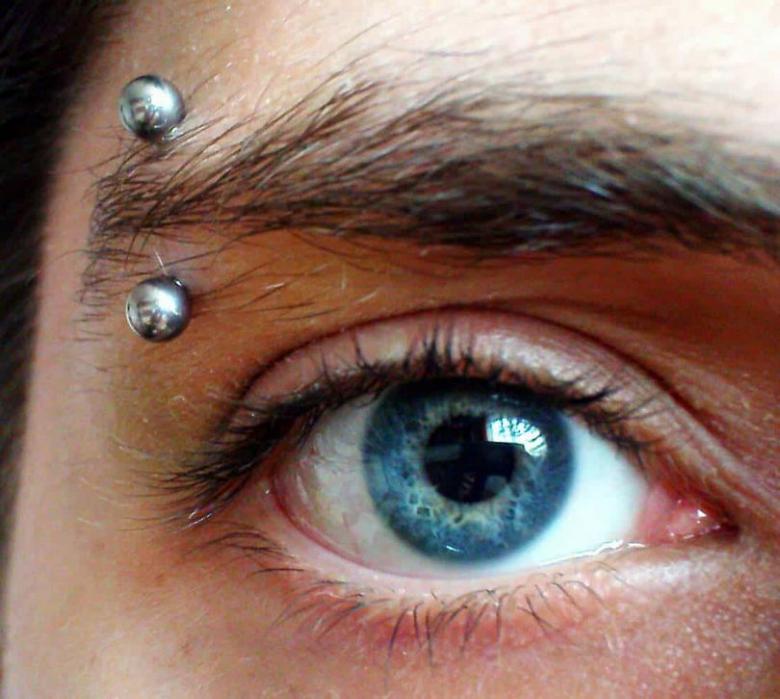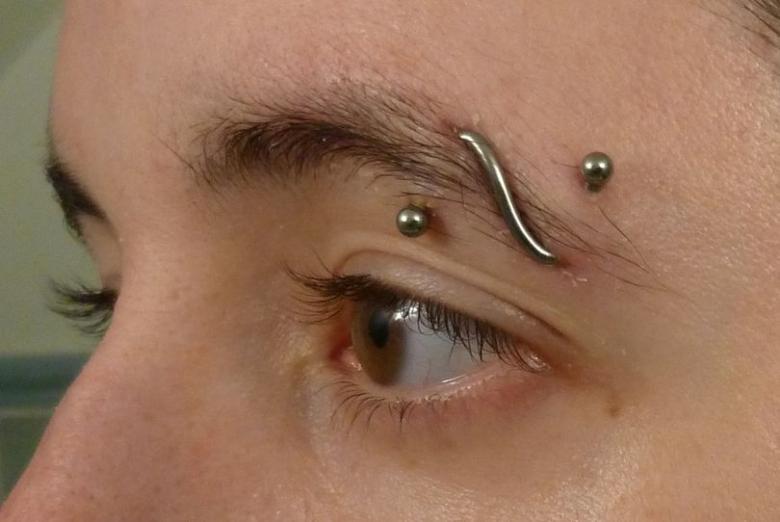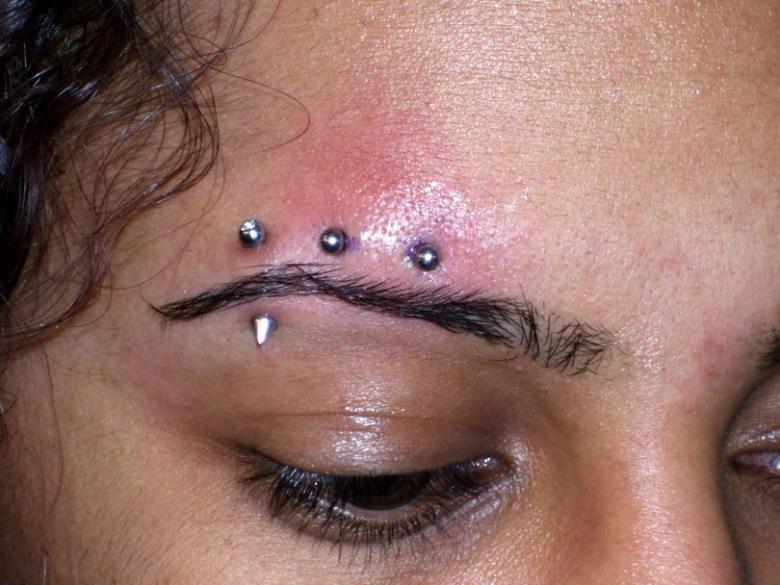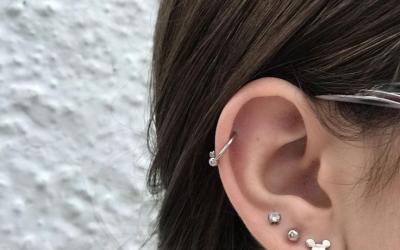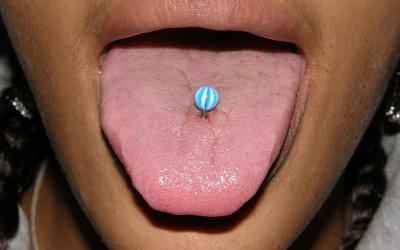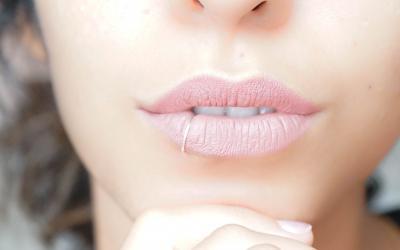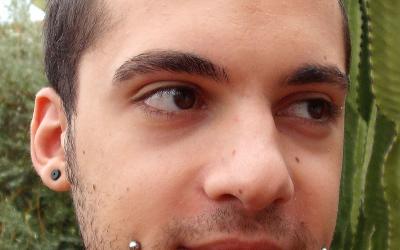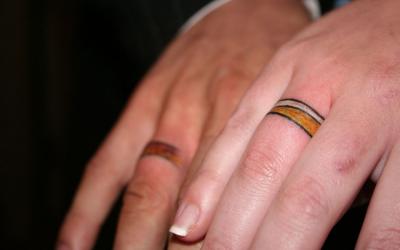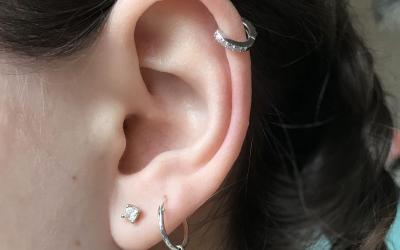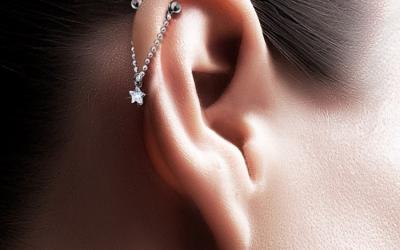Piercing eyebrows - performance technique, care and healing, jewelry (ring, earrings, studs), great photos of work
Eyebrow piercing is a great way to emphasize your individuality. Especially popular among young people. The technique of its installation is not complicated, the main thing is to choose the right material for the decoration.

Eyebrow piercing - a common type of piercing, popular with both sexes. Decorations in the eyebrows will allow to emphasize the bright features and uniqueness of their own style. The tradition of such piercing counts many centuries, it has not lost its relevance nowadays. There are no differences in the technique of installation of jewelry in men and women, the main thing is to choose the right accessory that matches the appearance and style of clothing.
Eyebrow piercing varieties
Performing eyebrow piercing can be done in different ways. The most common options include:
- Vertical piercing. Performed by grabbing an area of skin in the area of the brow, which is pierced from top to bottom. In it, a rod with decorations in the form of crystals, spikes is usually placed. A relatively unsafe variety, there is a significant risk of developing an inflammatory reaction. The healing process is longer than with other varieties of piercing.
- Horizontal piercing. This is performed in the upper part of the eyebrow. It's characterized by a simple and quick piercing procedure, and minimal healing time.
- Diagonal piercing. The procedure is similar to the horizontal variation, differing only in the angle of the piercing, which is performed across the entire width of the brow. It has an original appearance, heals quickly enough, and the probability of complications is low.
- Antibrow. The original variant of the ornament, it is placed in the upper part of the cheekbone. It is often bilateral. The piercing procedure is quite complicated, so it is only done by professional masters.
- Bridge. The piercing is done in the bridge of the nose, usually at eye level. It is best suited for men. The main difference is the long healing process (up to six months).
All of these options for eyebrow piercing can be freely combined with each other, receiving a unique combination of appearance.
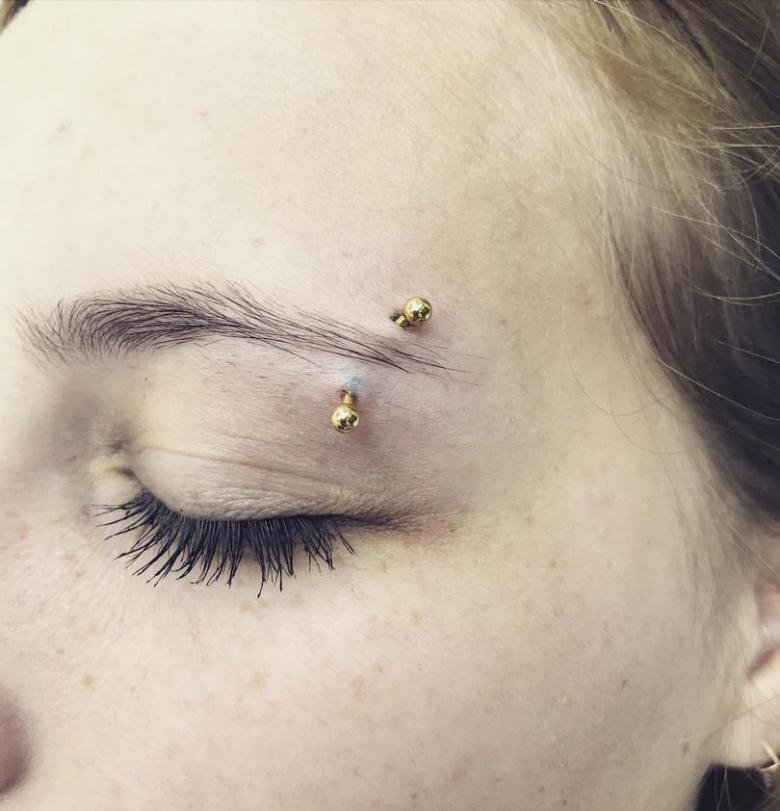
How to do eyebrow piercings
The procedure should be performed only in specialized salons, by a professional master, who is able to use special tools. This will allow you to protect yourself as much as possible from unwanted consequences and complications, the risk of which in this variant of piercing is quite high.

The procedure is divided into the following stages:
- Disinfection of instruments and jewelry.
- Antiseptic treatment of the puncture site.
- Capture and fixation of the skin with special clamps.
- Making a puncture with a special needle with a catheter, through which the installation of jewelry is carried out.
- Antiseptic treatment of wounds left after the puncture.
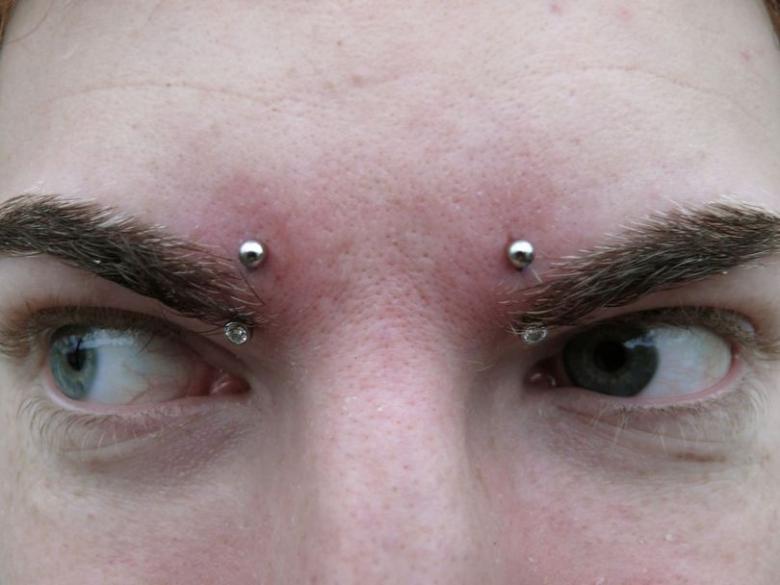
An experienced master can perform the procedure in minimal time (less than a minute), and there will be practically no pain. If you wish, you can ask for additional local anesthesia.

It is not worth doing piercings at home, it is associated with a high risk of complications in the form of infection of the piercing.
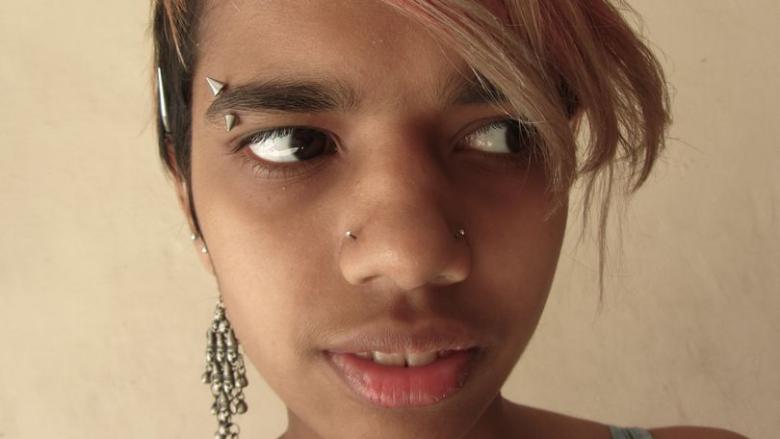
Possible consequences and contraindications
Eyebrow piercing should not be done if:
- Your age is less than 16 years old.
- There are serious heart disease, kidney disease, cancer.
- During acute colds or other infectious diseases.
- During pregnancy or breastfeeding.

Since an eyebrow piercing takes quite a long time to heal, you need to adhere to the recommendations for taking care of it. These include:
- Regular washing of the puncture with antiseptic solutions.
- If any blood or bloody debris is released, it must be gently wiped off with a sterile napkin to prevent crusts from forming.
- To accelerate healing, you can treat the puncture with lavender oil.
- Do not visit saunas and swimming pools in the first 6 weeks after the procedure.
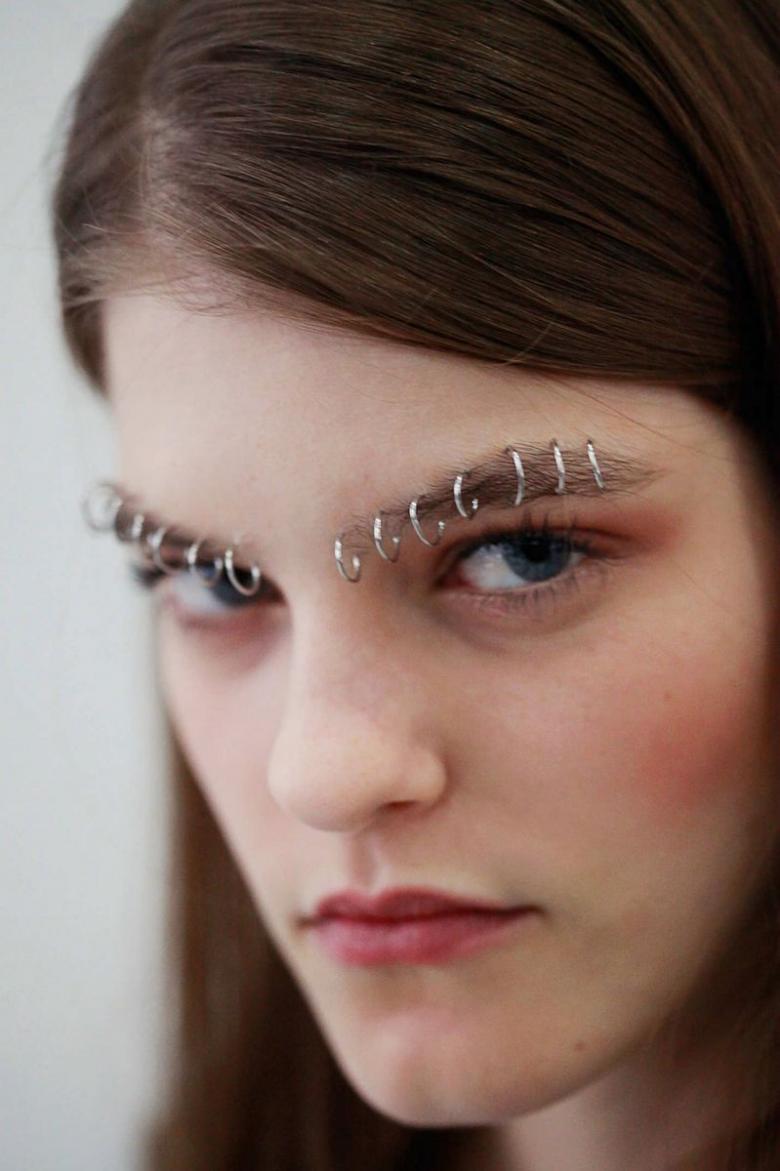
These measures will significantly reduce the healing period, protect the wound from infection and the development of serious inflammation. It is infection that is the most frequent complication of eyebrow piercings. Its main symptoms are:
- Severe pain in the site of the piercing.
- Purulent discharge.
- Reddening and swelling.

In this case, you should immediately seek medical help as purulent processes in the face can have serious consequences, such as meningitis (inflammation of the meninges) and sepsis.

What is the best material for the jewelry
- Eyebrow piercing jewelry can be made from a wide variety of materials. The most preferred options:
- Gold. Conventional gold should not be placed in a fresh piercing, it contains various impurities that can hinder the healing process. If the jewelry is made of ultrapure (palladium) gold, there are no such risks, it can be installed immediately.
- Silver. Poorly suited for this type of piercing because it oxidizes in contact with the skin and blood.
- Surgical steel. The simplest and the most accessible variant of the material. Not suitable for fresh piercings as it contains various impurities such as chromium and nickel, they can cause allergies.
- Bioplastic. The only plastic decoration option. In contrast to conventional plastics does not contain allergens and toxic impurities. It is better not to put in fresh punctures.
- Titanium. The safest material for piercing. Perfectly takes root, does not cause inflammatory and allergic reactions. The only disadvantage - a rather high cost.

Rarely there are wooden decorations for eyebrow piercing, they should be avoided, as well as products made of cheap plastic. Wood can be installed only in already healed punctures, no more than 2 months, after which the decoration must be changed.
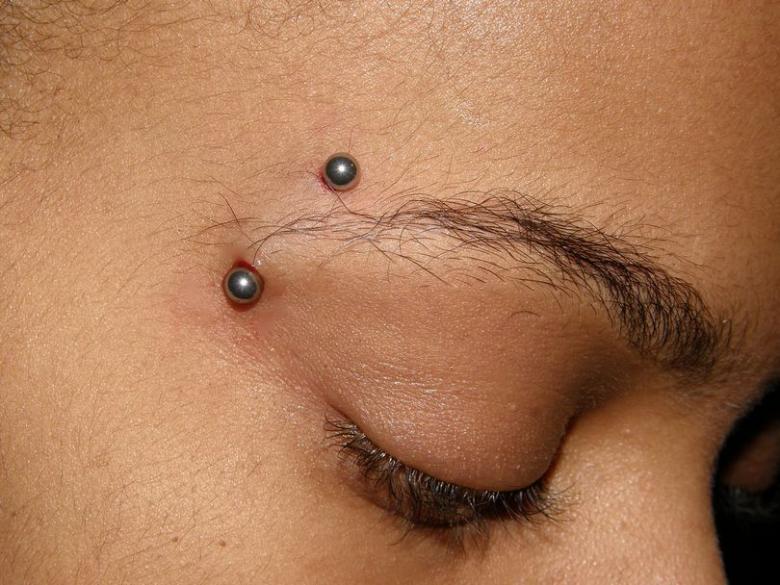
Care rules
Eyebrow piercing requires daily thorough care. The jewelry must be taken out, washed with antiseptics. Chlorhexidine and Miramistine are good. This will avoid the development of inflammatory processes associated with the development of pathogenic microflora in the puncture site.

As eyebrow piercing even in the simplest variant of installation is connected with the risk of development of complications it is necessary to carefully weigh all positive and negative consequences of installation of such jewelry. If you still decide to use it, it is important to carefully observe the rules of antisepsis and regularly treat the puncture site.

